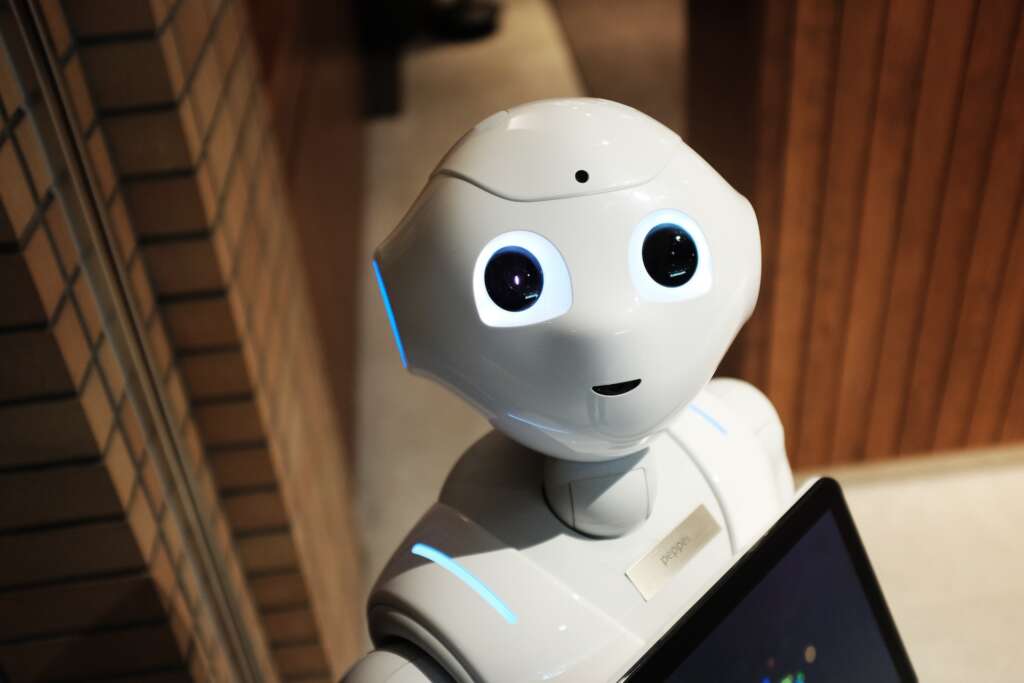In the realm of technology, there’s a fascinating field that is pushing the boundaries of what robots can do: robotic vision. This incredible capability has the potential to revolutionize numerous industries, from manufacturing and healthcare to agriculture and beyond. In this blog post, we’ll delve into the world of robotic vision, exploring what it is, how it works, and the exciting possibilities it holds for our future.

Future of Robotics: Robotic Vision – What is Robotic Vision?
Robotic vision, also known as computer vision, is a multidisciplinary field that focuses on enabling machines, particularly robots, to interpret and understand the visual world around them. It involves equipping machines with the ability to capture, process, and analyze visual data from their surroundings, much like how humans use their eyes and brains to perceive and make sense of the world.
Check out our other article about Flexible ‘skin’ should make robots feel better
How Does Robotic Vision Work?
At its core, robotic vision relies on the integration of hardware and software components to replicate human vision. Here’s a simplified overview of how it works:
- Sensing: Robots are equipped with sensors such as cameras, LiDAR (Light Detection and Ranging), and depth sensors. These sensors capture images and other visual data from the environment.
- Data Acquisition: The captured data is converted into a digital format and fed into a computer or onboard processor for further analysis.
- Image Processing: Advanced algorithms process the digital data, enhancing and filtering it to extract relevant information. This step includes tasks like image segmentation (identifying objects in an image) and feature extraction.
- Object Recognition: Robotic vision systems are trained to recognize objects, patterns, and shapes within the processed data. This is achieved through machine learning and deep learning techniques, including convolutional neural networks (CNNs).
- Decision-Making: Once objects are identified, the robot’s control system can make informed decisions based on the visual information it has gathered. This might involve navigation, manipulation, or other actions.
Applications of Robotic Vision
The applications of robotic vision are wide-ranging and continue to expand as the technology matures. Some notable examples include:
- Manufacturing: Robotic vision is transforming manufacturing processes by enabling robots to inspect products for defects, guide autonomous assembly, and work alongside human workers more safely and efficiently.
- Healthcare: Surgical robots with vision capabilities assist surgeons in complex procedures, enhancing precision and reducing the risk of human error. Robotic vision is also being used for diagnostics and patient care.
- Agriculture: Autonomous drones and robots equipped with vision systems are revolutionizing farming by monitoring crop health, identifying pests, and automating tasks like harvesting and weeding.
- Autonomous Vehicles: Self-driving cars rely heavily on robotic vision to perceive their surroundings, make driving decisions, and navigate safely.
- Security and Surveillance: Robotic vision is used in security systems to identify and track intruders, analyze video footage for suspicious activities, and enhance overall surveillance capabilities.
- Retail and Logistics: Robots are being employed in warehouses and stores for inventory management, order fulfillment, and customer assistance through visual recognition.
Challenges and Future Directions
While robotic vision has made significant strides, it still faces challenges such as handling complex and dynamic environments, robustly recognizing objects under varying conditions, and ensuring data privacy and security. However, ongoing research and technological advancements are addressing these issues.
In the future, we can expect robotic vision to become even more integral to our lives. Enhanced visual perception will enable robots to interact seamlessly with humans in everyday settings, from homes to hospitals to public spaces. As the technology evolves, ethical considerations surrounding its use, such as data privacy and bias in algorithms, will also become increasingly important.
Robotic vision is a field with immense potential, poised to transform industries and improve our daily lives. By equipping robots with the ability to “see” and interpret the world around them, we are opening the door to a future where machines can perform complex tasks, enhance safety, and assist humans in countless ways. As robotic vision continues to advance, it will undoubtedly play a pivotal role in shaping the future of technology and society.
More relevant sources on Future of Robotics: Robotic Vision
Here are some valuable links to further resources on the internet where you can explore more about robotic vision:
- OpenCV: OpenCV is an open-source computer vision library widely used in the field of robotic vision. Their website offers tutorials, documentation, and a wealth of information on computer vision techniques. OpenCV Official Website
- IEEE Robotics and Automation Society: This is a professional organization that publishes research papers, articles, and hosts conferences related to robotics and robotic vision. IEEE RAS
- Robotics Business Review: This website covers the latest developments in robotics, including articles and reports on robotic vision applications across various industries. Robotics Business Review
- Robotics Trends: Another excellent resource for staying updated on the latest trends in robotics, including articles and insights into robotic vision technologies. Robotics Trends
- Stanford Vision and Learning Lab: Stanford University’s lab focuses on computer vision and deep learning research. Their publications and projects provide valuable insights into cutting-edge robotic vision techniques. Stanford Vision and Learning Lab
- MIT Computer Science and Artificial Intelligence Laboratory (CSAIL): CSAIL conducts research in various fields, including robotics and computer vision. Their website offers a wealth of information on robotic vision projects and publications. MIT CSAIL
- Coursera – Introduction to Computer Vision: If you’re interested in learning more about computer vision through online courses, Coursera offers a comprehensive course by the University of Michigan. Coursera – Introduction to Computer Vision
- YouTube – Robotic Vision Demonstrations: YouTube has numerous channels and videos demonstrating robotic vision in action, from industrial applications to robotics research. YouTube Robotic Vision Playlist

